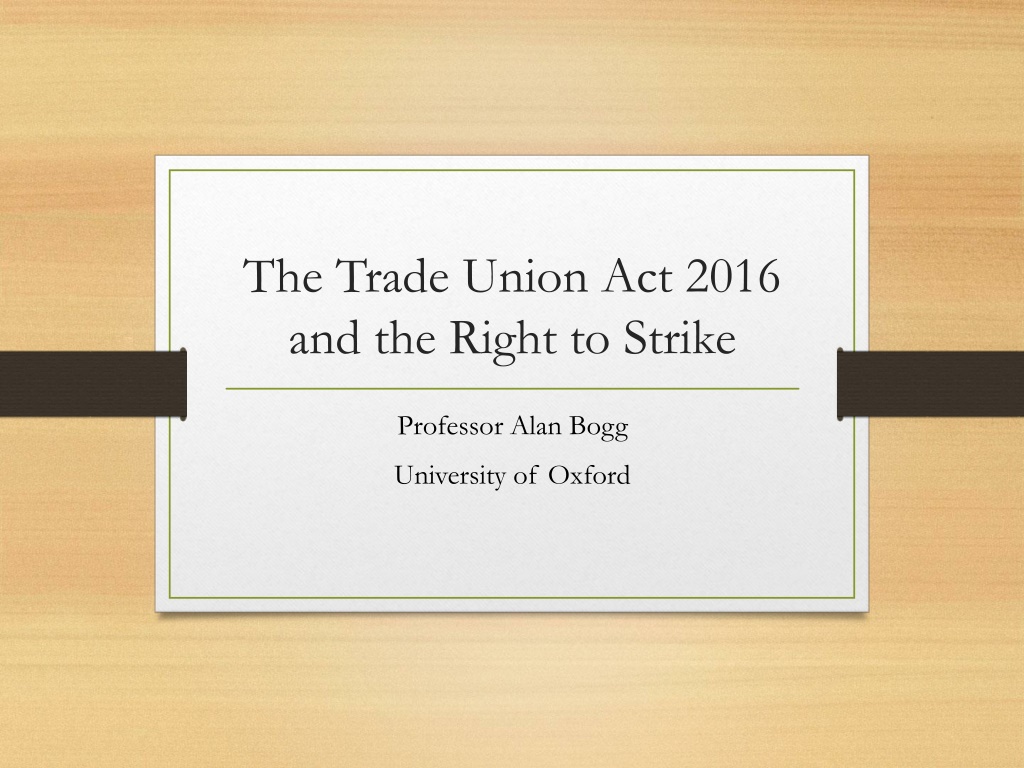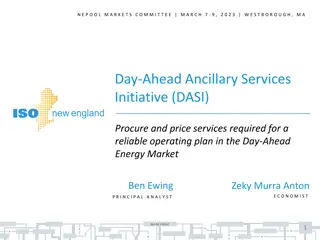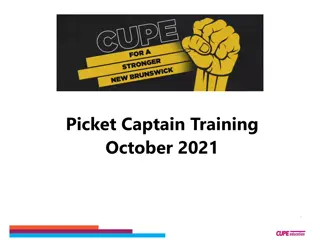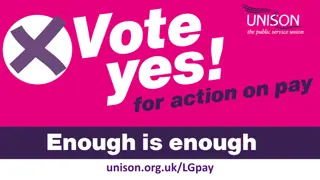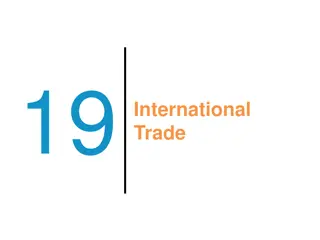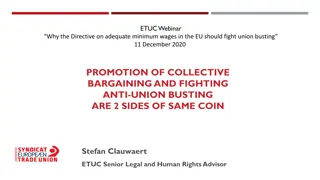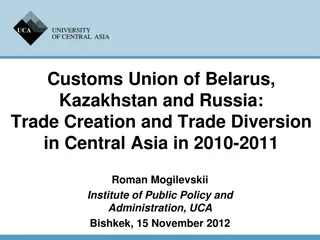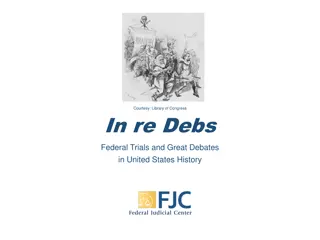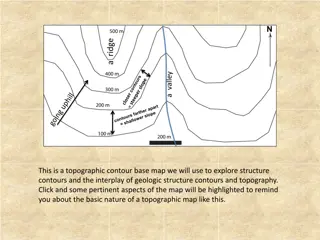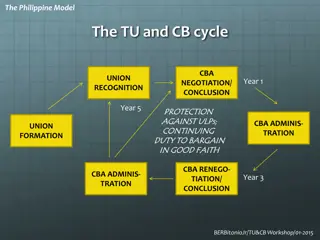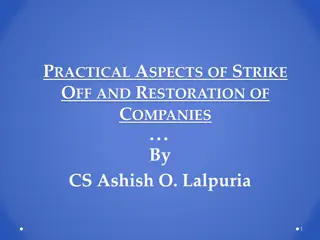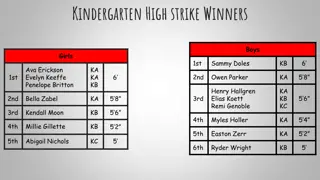The Trade Union Act 2016 - Impact on the Right to Strike
The Trade Union Act 2016 introduced significant restrictions on the right to strike in the UK, including new ballot thresholds, informational duties, notice requirements, and limitations on picketing. These changes aim to curtail the political influence of trade unions and enhance regulation of industrial action, particularly in essential public services. Strategies to counter these restrictions and potential future authoritarian state interventions are also discussed.
Download Presentation

Please find below an Image/Link to download the presentation.
The content on the website is provided AS IS for your information and personal use only. It may not be sold, licensed, or shared on other websites without obtaining consent from the author.If you encounter any issues during the download, it is possible that the publisher has removed the file from their server.
You are allowed to download the files provided on this website for personal or commercial use, subject to the condition that they are used lawfully. All files are the property of their respective owners.
The content on the website is provided AS IS for your information and personal use only. It may not be sold, licensed, or shared on other websites without obtaining consent from the author.
E N D
Presentation Transcript
The Trade Union Act 2016 and the Right to Strike Professor Alan Bogg University of Oxford
Overview of the Presentation Set out the main provisions of the Trade Union Act 2016. Examine the four main areas restricting the right to strike: ballot thresholds; informational duties; notice requirements; picketing and protest. Identify strategies for countering the political attack on the right to strike. Set out potential future directions of authoritarian state restriction of right to strike.
The main provisions of the Trade Union Act - Restrictions on the right to strike, especially in relation to new ballot thresholds and notice requirements - Tightening the law on picketing and protest - Restricting the political voice of trade unions by switching to an opt-in scheme applicable to new members - New investigative powers for the Certification Officer, including powers to impose quasi- criminal penalties in certain circumstances - Measures to curtail check off and facility time in the public sector
The Right to Strike I Section 2 stipulates a requirement that 50% of those entitled to vote did so, in order for the ballot to constitute a valid authorisation of industrial action. Section 3 stipulates a further requirement of 40% of those entitled to vote support the industrial action for workers normally engaged in the provision of important public services (health services, education of the under 17s, fire services, transport, nuclear decommissioning and border security)
The Right to Strike II New informational obligations on the trade union Ballot papers must include information on details of the matters in dispute, different types of envisaged industrial action short of a strike, and periods within which each type of industrial action is envisaged to occur Union must provide information after the ballot as soon as is reasonably practicable about the numbers of individuals entitled to vote, and whether or not the relevant thresholds were met. Union required to provide information to the Certification Officer on its strike activities in the annual return
The Right to Strike III New provisions on notice. The default notice period of industrial action to the employer is 14 days, but can be 7 days if the union and employer so agree . The mandate period is six months, extendable to nine months if the employer and union agree
The Right to Strike IV New provisions on the regulation of picketing and protest: see s 220A TULRCA 1992 The presence of a picket supervisor is necessary in order for a picket to be lawful The legislation sets out a list of very prescriptive criteria in order for a picket to be within the scope of the statutory immunity (union must take reasonable steps to tell the police the supervisor s name; must show the letter to the employer on request; must be in attendance or readily contactable; must wear something that makes her readily identifiable) A failure to satisfy these criteria opens up liability in tort for picket organisers and potential loss of unfair dismissal protection for strikers
Fighting Back Government review into electronic balloting to be led by Sir Ken Knight, to report in December. The Joint Committee on Human Rights to revisit aspects of the balloting provisions (especially the thresholds) once the regulations have been finalised. Vigilance and challenge to the lobbying activities of right-wing think tanks (note the central role of Policy Exchange in its research note Modernising Industrial Relations). Devolution and litigation strategies: Re Agricultural Sector (Wales) Bill; A-G for England and Wales v Counsel General for Wales [2014] UKSC 43. Human rights and litigation strategies: see RMT v UK (2015) 60 EHRR 10 and Unite the Union v UK App No 65397/13, 26thMay 2016.
What next? The use of agency workers in strikes? Regulating and restricting the use of social media in industrial disputes, and revisions to the COP on picketing (see BIS Consultation on Intimidation of Non-Striking Workers) Repealing the unfair dismissal concept of protected industrial action under s 238A TULRCA 1992? (see Policy Exchange, Modernising Industrial Relations) Banning strike action in important public services? (see Policy Exchange, Modernising Industrial Relations) New criminal offences to regulate picketing and protest ( intimidation on the picket line )? (See BIS Consultation on Intimidation of Non-Striking Workers)
